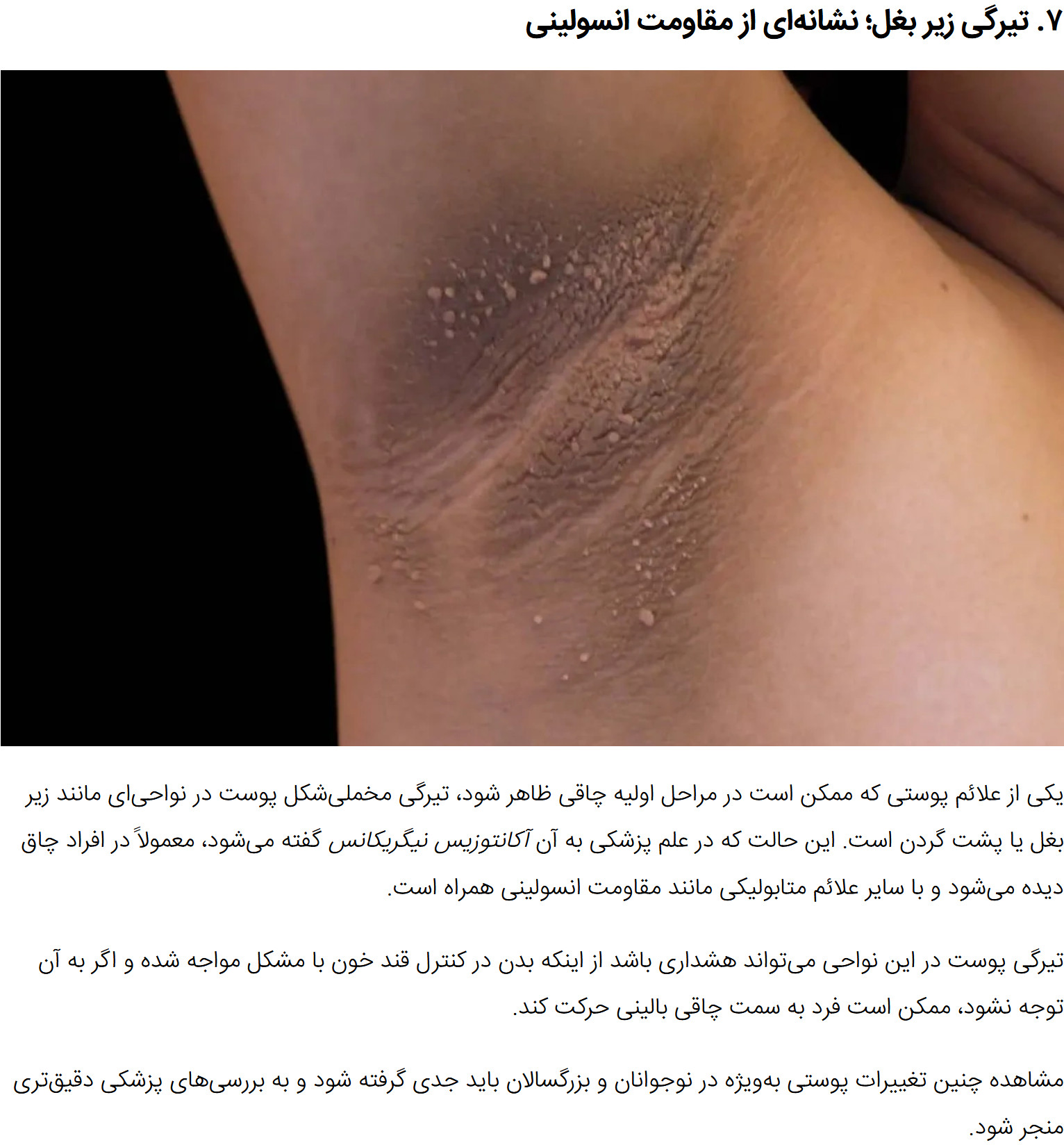Darkening of the Armpits: A Sign of Insulin Resistance
A common but often overlooked sign of early metabolic imbalance in obesity is the darkening and thickening of the skin in certain areas, particularly the armpits, neck, and groin. This condition, known medically as acanthosis nigricans, appears as velvety, brownish patches and is typically associated with insulin resistance.
Insulin resistance means that the body’s cells are not responding properly to insulin, the hormone responsible for regulating blood sugar levels. As insulin levels rise in compensation, certain skin cells react by overgrowing and producing more pigment, leading to visible dark patches. This skin change is often one of the first physical signs that the body is struggling to manage blood sugar effectively—especially in overweight and obese individuals.
The presence of acanthosis nigricans may indicate that someone is moving from a pre-obese condition into clinical obesity, where metabolic complications such as type 2 diabetes become more likely. This is particularly important in adolescents and young adults, for whom these changes can be an early warning of serious health risks if no intervention is made.
Although the darkened skin itself is not dangerous, it should not be ignored. It is a clear signal that deeper hormonal and metabolic imbalances are occurring. If this symptom is observed, especially alongside other signs like weight gain, fatigue, or increased hunger, it should prompt further medical evaluation.
The good news is that lifestyle changes—such as losing weight, improving diet, and increasing physical activity—can reverse insulin resistance and often reduce or eliminate the appearance of acanthosis nigricans. Recognizing this skin condition as a metabolic red flag is a key step in preventing the progression to clinical obesity and its related health problems.

